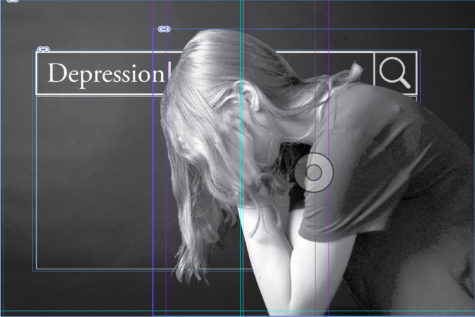Google promotes screening device
 It has been likened to drowning, and although it is largely treatable, only a small percentage of people with it ever seek help. Google is attempting to remedy this.
It has been likened to drowning, and although it is largely treatable, only a small percentage of people with it ever seek help. Google is attempting to remedy this.
In partnership with the National Alliance on Mental Illness, also known as NAMI, Google created a new function for anyone who searches “depression.”
Teri Brister, director of knowledge integration at NAMI, said in a phone interview that as of the last week of August 2017, when people Google search the word “depression” on a mobile device, the tool most used to Google search information on, they will be given the option to take a screening quiz. The quiz, called the Patient Health Questionnaire or PHQ-9, is traditionally used by general practitioners like pediatricians to determine if someone may be clinically depressed.
“It doesn’t diagnose, but it literally is a screening tool,” said Brister. “You fill it out, and based on how you respond, it gives you an idea of how your answers compare to people who have experienced depression.”
Patrick Wagner, Glenbrook North social worker, said people should be aware that Google has said it will not share the results of the test, but it does still store information. However, as a company with great reach, Google has the ability to help more people experiencing symptoms of depression to reach out to someone through its promotion of the PHQ-9.
“It isn’t just taking a survey, but it is also then giving people actions, things that they can do, and connecting them with resources,” Wagner said.
According to Brister, there are many reasons for people who suspect they are depressed to hesitate to ask for help, and the screening tool may prompt them to act.
“There’s a lot of stigma surrounding mental illness, regardless of whether it is depression or if it’s schizophrenia, and people are not comfortable asking for help frequently, but they are comfortable looking on their phones and [Google searching] and trying to find information,” Brister said.
Senior Rachel Patris said she believes the new function might help people overcome the stigma.
“Whatever the scale, there’s nothing wrong with you,” said Patris. “You could be extreme or you could just be a mild case, [but] it’s not your fault. You’re not in control of it. It’s a chemical imbalance, and that’s just the way your body is.”
Brister said the function is meant to target people who suspect they are having difficulties and have not sought resources because they are not sure if their troubles are normal.
“Everybody gets sad, everybody has bad days and everybody has symptoms of depression,” said Brister. “What this screening tool does is help a person get an idea [of what is wrong].”
According to Wagner, GBN has many resources available for people who want to seek help, including psychologists and social workers. There is also an anonymous tip box in the Student Services Office and Text-a-Tip for people who believe they know someone who could be experiencing depression or who needs help in another way.
Patris said she believes the new function could help increase depression awareness at GBN.
“With such a high-achieving academic community, mental health is one of the things that gets swept under the rug the most,” said Patris. “I think [by] being aware of what that looks like and what that feels like, you could be a huge advocate.”

